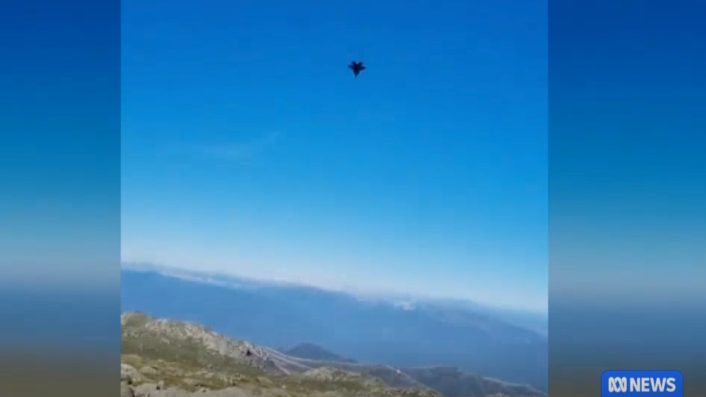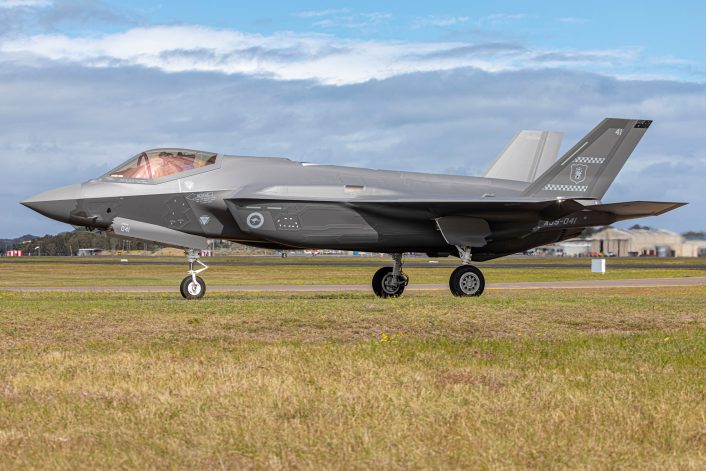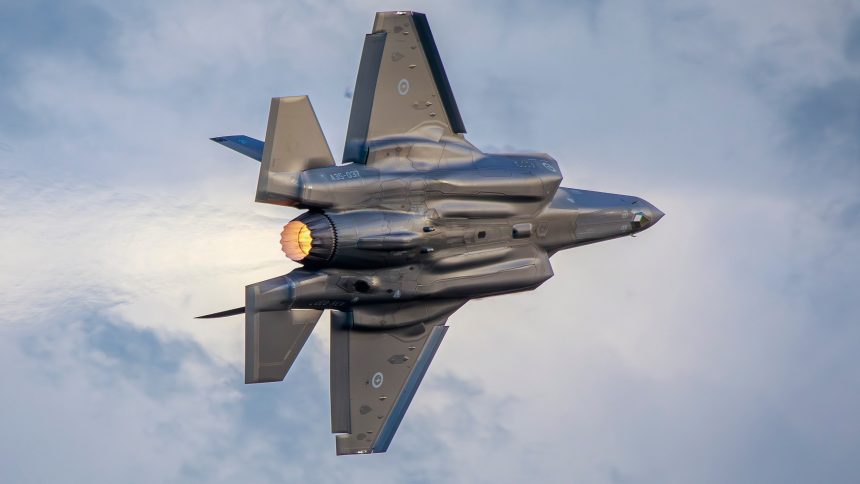Video of RAAF F-35 rolling inverted over Kosciuszko National Park sparks media hype, but similar tactical maneuvers are standard training for fast jet pilots worldwide.
An incident involving a Royal Australian Air Force F-35A Lightning II performing “risky”, low-level tactical maneuvers over Kosciuszko National Park, in the Snowy Mountains, New South Wales, has allegedly sparked concerns among senior RAAF figures, ABC News reported. The Australian media outlet published footage, captured in February of last year, showing an F-35 conducting “low level awareness training,” a common exercise among fast jet pilots globally.
The clip (that you can find here) shows the aircraft executing an aileron roll, then pulling downwards to follow the mountainous terrain with positive g-forces before leveling out close to the ground. ABC says the video has circulated widely in military circles, prompting questions about the safety and protocols surrounding such maneuvers.

A key aspect of the incident is the reported activation of the F-35’s “auto-recovery”, most probably meaning the Automatic Ground Collision Avoidance System (AGCAS), a crucial safety feature designed to prevent crashes by automatically taking control of the aircraft if it detects an imminent collision with the ground. Although the Department of Defence has declined to comment on whether AGCAS was engaged during this particular incident, an anonymous source within the RAAF told ABC News that it saved the aircraft from a potentially catastrophic outcome.
What the video shows (and doesn’t)
The short amateur video shows the RAAF F-35 perfoming a “ridge crossing maneuver,” a tactical maneuver of flying an aircraft over a ridge or mountain range at low altitude to evade detection by enemy radar or to maintain a low profile during reconnaissance or attack missions. Ridge crossing can be challenging due to the sudden change in terrain, requiring precise control and awareness from the pilot. The technique is essential in environments where terrain masking is used to conceal aircraft movements from the enemy.
While the “ridge crossing maneuver” is evident, it also looks to be “pretty standard”, at least according to an F-35 pilot who talked to us on condition of anonymity. “The quality of the video is poor, hence the activation of the AGCAS is not clearly visible, although we can’t rule it out”.
AGCAS was fielded in the F-16 in 2014 and later integrated into the F-35. The system uses a combination of terrain databases, onboard sensors, and flight control inputs to predict potential collisions with the ground. If AGCAS determines that a collision is imminent and the pilot does not take corrective action, it automatically overrides the pilot’s inputs, adjusting the aircraft’s flight path to avoid the crash, pulling several gs if needed. Once the aircraft is on a safe trajectory, control is returned to the pilot. This technology has been credited with saving multiple aircraft and pilot lives, particularly in scenarios where spatial disorientation or momentary inattention could lead to fatal outcomes.
Senior Air Force Reaction and Implications
The RAAF incident reportedly did not sit well with then-chief of Air Force, Air Marshal Rob Chipman, who, according to defense sources mentioned by ABC News, was “not happy” with the actions depicted in the video. However, despite the backlash, the maneuver shown in the clip is part of a formal training regimen for fast jet aircrew, which includes comprehensive preparation through lectures, briefings, simulator missions, and real-flights. These are designed to prepare pilots for the challenges of low-level flight, which can be critical in combat scenarios for “terrain masking”, to avoid radar as well as visual detection.
RAAF training is known for its “robust debrief and review” processes, ensuring that every training mission is meticulously analyzed for safety, effectiveness, and adherence to protocol. This approach allows for continuous improvement and learning, even when incidents like this occur.
The pilot involved in this maneuver has since completed his Air Warfare Instructor Course, ABC reported too.
The media attention around the not officially confirmed incident raised broader questions about the use of advanced aircraft like the F-35 in high-risk training environments. Australia’s fleet of 72 F-35A Lightning II jets represents a significant investment in the nation’s air combat capabilities. Despite achieving initial operating capability in December 2020, as happened in many other countries, the fleet has faced scrutiny over its cost, complexity, and safety record, particularly following the mishaps involving F-35s worldwide.
Earlier this year, the Albanese government made the decision to halt further acquisitions of F-35s, opting instead to delay the planned retirement of the RAAF’s Super Hornets. This decision, is not based on safety concerns though, but it reflects a cautious approach to fleet management and resource allocation, particularly in light of ongoing debates about the long-term value and sustainability of the F-35 program.

The F-35’s Cutting-Edge Capabilities and Challenges
The F-35 Lightning II is heralded as one of the most advanced fighter jets in the world, featuring stealth technology, supersonic speeds, and an array of sophisticated sensors and weapons systems. The F-35 is a multi-role fighter capable of performing air-to-air combat, ground attack, and intelligence, surveillance, and reconnaissance missions. Its advanced avionics and network-centric warfare capabilities make it a key asset in modern air forces, including the RAAF.
However, the complexity of the F-35 also presents unique challenges, particularly when it comes to maintenance, operational costs, and pilot training.
As explained recently, the F-35 is one of the most complex aircraft ever built but also one of the easiest to fly. In fact, compared to previous generation aircraft, the effort a pilot puts in flying an F-35 is much less than in older aircraft due to its advanced fly-by-wire system, integrated sensors, and highly automated systems, including the AGCAS system. These features significantly reduce the pilot’s workload, allowing them to focus more on mission management rather than basic flight control tasks. The pilot’s effort in a 5th generation aircraft is more on managing the onboard sensors than handling or landing the jet.









